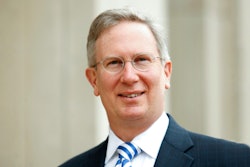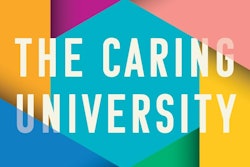MADISON Wis.
The University of Wisconsin System is about to get bigger.
More researchers at UW-Milwaukee. More adult students in the two-year UW Colleges. And more undergrads at UW-Green Bay and UW-Oshkosh.
The state budget signed into law last week allows UW campuses to begin expansions intended to increase the number of graduates and boost economic development. UW System President Kevin Reilly had campaigned for more than a year for the so-called Growth Agenda, which he called critical to the state’s economic future.
“This will put us in a position to start growing the number of college graduates in Wisconsin, increasing wages and attracting more college students to Wisconsin,” UW System spokesman David Giroux said.
The plans could add up to 7,700 more students to the UW System’s 160,000 enrollment over the next six to eight years and hundreds more professors and staff members, UW System officials have said.
The campuses will get $21.4 million next year to begin many of the projects, which will require more tax and tuition dollars to be completed.
The projects include:
Efforts at UW-Milwaukee to improve the school’s research. The university will use its $8.4 million to hire 20 leading faculty members in science and engineering, add graduate students and provide seed money for researchers, UW-Milwaukee Provost Rita Cheng said.
A plan by UW-Eau Claire and UW-Stout to educate more students in science and technology. The so-called NanoSTEM initiative allows the campuses to start new majors and hire faculty members.
A statewide plan to increase the number of nurses. Campuses will establish nursing programs in areas of the state that do not have them, develop accelerated programs for students who have degrees in other fields and expand their graduate programs.
Plans by UW Colleges and UW-Extension to increase the number of night classes and recruitment and counseling services. The goal is to increase the number of adult students.
Expanding enrollment at UW-Oshkosh and UW-Green Bay. The Oshkosh campus wants to increase its undergraduate student enrollment by 1,440 over the next six years. In Green Bay, plans call for adding 2,100 undergraduate students over 10 years.
But although the budget includes money to start the Growth Agenda, it also requires campuses to cut a total of $25 million from their operations over the next two years. Those cuts could delay some of the growth plans.
“It’s going to have a slowing effect to some degree, the extent to which we really don’t know yet,” Giroux said. “We’re going to try to take that lapse in a way that protects students from harm and does put our growth initiatives on solid footing.”
Lawmakers killed a plan at UW-La Crosse to increase its tuition by $1,320 over three years. The tuition increase would have paid for 1,000 additional students, more financial aid for low-income students and 100 more professors.
Lawmakers balked at the tuition increase and gave the campus about $900,000 for its growth plan instead of the $15 million per year the tuition increase would eventually have generated. The cut means the university cannot go forward with its plan as anticipated.
UW-Madison, the state’s flagship university, did not plan any growth under the initiative. Chancellor John Wiley has said the campus of about 41,000 students has no room to add students. But he praised the budget last week for giving his campus money to continue existing programs and keep in-demand faculty.
© Copyright 2005 by DiverseEducation.com


















